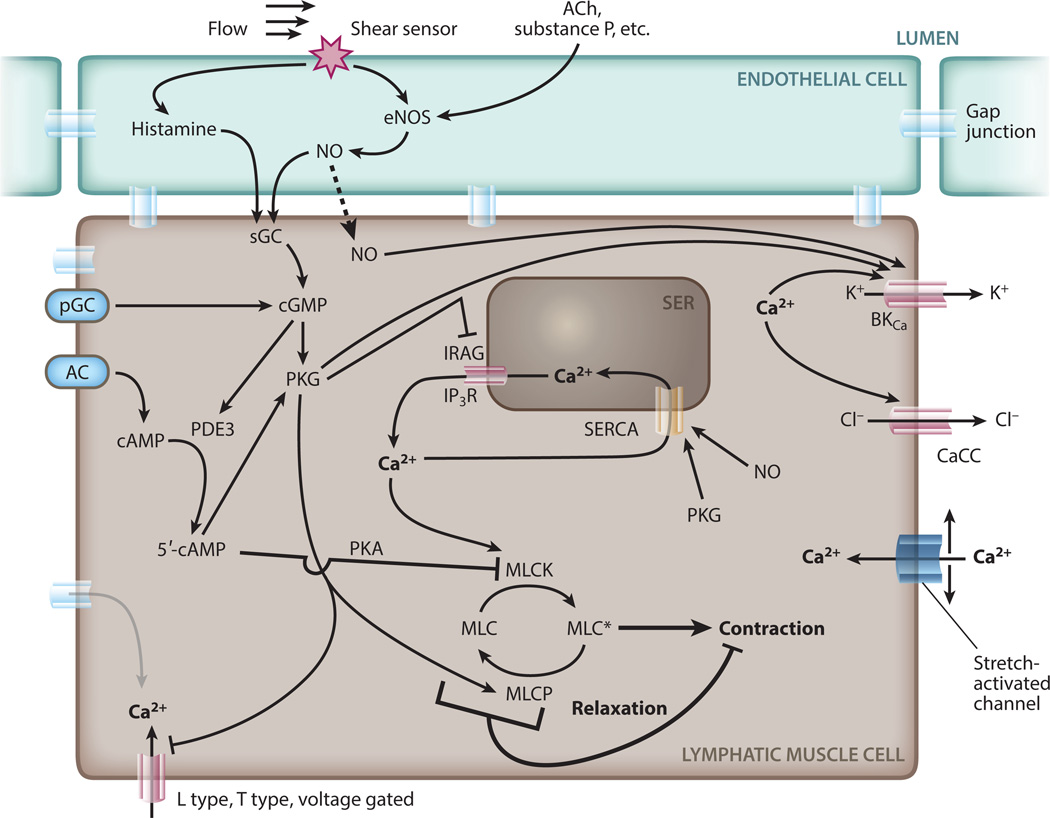Figure 2.
Calcium dynamics in the lymphatic muscle cell. Calcium enters the cytosol through ion channels (L type, T type, stretch activated) in the plasma membrane or SER (SERCA, IP3R). Ca2+ acts through MLCK to phosphorylate MLC, allowing formation of the myosin–actin crossbridges and cell contraction. CaCCs can enhance depolarization during STD generation. Endothelial cells produce EDRFs such as histamine and NO that activate sGC, cGMP, PKG, and MLCP. In addition to these effects, which reduce intracellular Ca2+, EDRFs also dephosphorylate MLC, directly interfering with the calcium-induced contractions. Abbreviations: AC, adenylate cyclase; ACh, acetylcholine; CaCC, calcium-activated chloride channel; cGMP, cyclic guanosine monophosphate; EDRF, endothelium-derived relaxing factor; eNOS, endothelial nitric oxide synthase; IP3R, inositol 1,4,5-trisphosphate receptor; IRAG, IP3R-associated cGMP kinase substrate; MLC, myosin light chain; MLCK, MLC kinase; MLCP, MLC phosphatase; NO, nitric oxide; pGC, particulate guanylate cyclase; PKA, protein kinase A; PKG, protein kinase G; SER, smooth endoplasmic reticulum; SERCA, sarco/endoplasmic reticulum Ca2+ ATPase; sGC, soluble guanylyl cyclase; STD, spontaneous transient depolarization.

